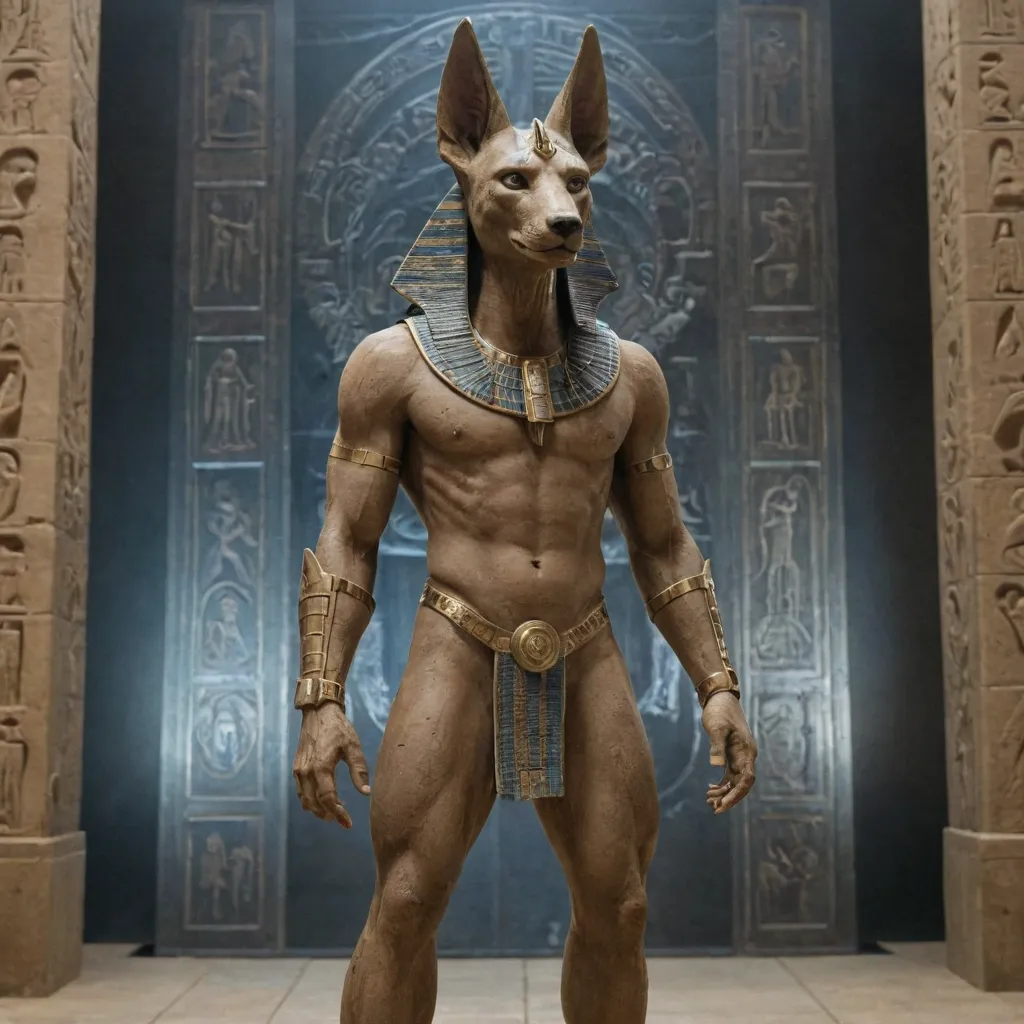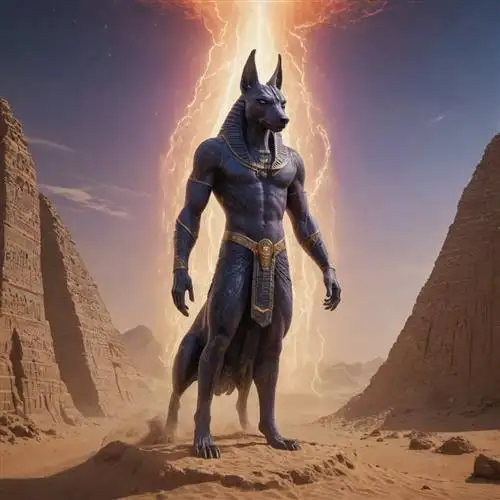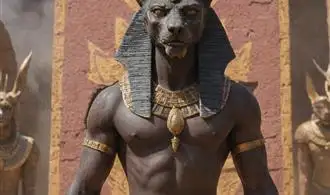
The Mysterious Origins of Anubis
Anubis, the enigmatic Egyptian deity, has captivated the imagination of scholars and enthusiasts alike. Tracing the roots of this powerful figure reveals a complex tapestry of mythology, symbolism, and cultural significance. Delving into the mysterious origins of Anubis sheds light on the pivotal role he played in ancient Egyptian beliefs and practices.
One of the earliest known depictions of Anubis dates back to the First Dynasty, around 3100 BCE. However, the origins of this deity can be traced even further, with evidence suggesting that Anubis may have been a pre-dynastic funerary god. The jackal-headed figure was closely associated with the embalming process and the afterlife, serving as a guide and protector for the deceased on their journey to the next world.
The name "Anubis" is derived from the ancient Egyptian word "Inpu," which translates to "to decay" or "to decompose." This etymological connection highlights the deity's intimate relationship with the process of death and the transformation of the physical body. Anubis was revered as the guardian of the necropolis, responsible for overseeing the mummification and burial rituals that were essential to the Egyptian conception of the afterlife.
Interestingly, Anubis was not exclusively associated with death and the underworld. He was also believed to have a protective role, guiding and safeguarding the living. In some ancient Egyptian texts, Anubis is described as the "lord of the sacred land," suggesting a broader cosmic significance that extended beyond the realm of the dead.
The iconography of Anubis is equally captivating. The jackal-headed figure is often depicted holding a ankh, the symbol of life, and a was scepter, representing power and dominion. These visual representations underscore Anubis' dual role as both a guardian of the dead and a protector of the living.
Furthermore, Anubis' association with the jackal or dog-like creature has been the subject of much scholarly debate. Some researchers believe that the jackal was chosen as Anubis' animal form due to the scavengers' proximity to burial sites and their role in the natural decomposition process. Others suggest that the jackal was selected for its keen senses and ability to navigate the darkest corners of the underworld.
The Dual Roles of Anubis
Anubis, the enigmatic Egyptian deity, was revered for his multifaceted roles in the ancient world. As the god of the dead, Anubis was responsible for guiding the souls of the departed on their journey to the afterlife. However, his influence extended far beyond this primary function, encompassing a range of duties and responsibilities that were vital to the well-being of the Egyptian people.
One of Anubis' most significant roles was as the protector of the dead. He was responsible for the embalming process, ensuring the proper preservation of the deceased's body. This critical task was essential for the soul's successful transition to the afterlife, as the Egyptians believed that the physical form needed to be intact for the individual to continue their existence in the next life.
In addition to his role as the guardian of the dead, Anubis was also revered as a deity of justice and moral judgment. He was believed to weigh the hearts of the deceased against the feather of Ma'at, the goddess of truth and cosmic order. This ritual, known as the "Weighing of the Heart," determined the fate of the soul, with those deemed worthy granted passage to the afterlife, while the unworthy faced the consequences of their misdeeds.
Anubis' dual roles as both the protector of the dead and the arbiter of justice highlight the multifaceted nature of this remarkable deity. His influence extended beyond the realm of the deceased, as he was also associated with healing and the protection of the living. Anubis was believed to have the power to ward off evil spirits and protect individuals from harm, making him a revered figure in the pantheon of ancient Egyptian deities.
The Symbolic Significance of Anubis's Iconography
Anubis, the jackal-headed deity, was a central figure in ancient Egyptian mythology and religious practices. His iconic representation holds profound symbolic meaning that provides insights into the beliefs and cosmology of this ancient civilization. Exploring the symbolism of Anubis's iconography offers a deeper understanding of his multifaceted role and significance within the Egyptian pantheon.
The jackal head of Anubis is not merely a visual representation but a deliberate choice that carries deep symbolic weight. Jackals were observed to frequent cemeteries and gravesites, scavenging the remains of the deceased. This association with death and the afterlife led the Egyptians to view the jackal as a guardian and protector of the dead, making it the perfect embodiment for the deity responsible for the mummification process and the judgment of the soul.
The black color of Anubis's skin is also highly symbolic. Black was considered a sacred color in ancient Egypt, closely linked to the fertile soil of the Nile River, which brought life and regeneration to the land. This color connection imbued Anubis with associations of rebirth, transformation, and the cyclical nature of existence. The black hue also resonated with the dark, mysterious realm of the underworld, over which Anubis presided.
Another significant aspect of Anubis's iconography is the scale or balance that he is often depicted holding. This symbolizes his role as the overseer of the weighing of the heart ceremony, a crucial step in the process of determining the worthiness of the deceased. The balance or scale represents the impartial judgment of the soul, where the heart of the deceased was weighed against the feather of Ma'at, the goddess of truth and justice. Anubis's presence at this pivotal moment underscores his role as a gatekeeper and arbiter of the afterlife.
The posture and stance of Anubis in his depictions also hold symbolic meaning. He is often shown in a kneeling or crouching position, which can be interpreted as a gesture of reverence, humility, and service to the deceased. This positioning reflects Anubis's role as a servant and protector of the dead, guiding and facilitating their passage to the afterlife.
The Influence of Anubis on Ancient Egyptian Religion
Anubis, the jackal-headed deity, held a profound and multifaceted role in the intricate tapestry of ancient Egyptian religion. As the god of the dead, embalming, and the afterlife, Anubis was a central figure in the Egyptian pantheon, his influence permeating the realm of the deceased and the complex rituals that guided the journey of the soul.
One of the primary ways Anubis shaped ancient Egyptian religion was through his association with the mummification process. As the patron of embalmers, Anubis oversaw the meticulous preparations of the deceased, ensuring the proper preservation of the body and the safe passage of the soul to the afterlife. This role was pivotal, as the Egyptians believed that the physical form was essential for the continued existence of the individual in the afterworld.
Beyond his involvement in the mummification rites, Anubis also played a critical role in the judgment of the dead. In the famous "weighing of the heart" ceremony, Anubis would oversee the weighing of the deceased's heart against the feather of Maat, the goddess of truth and justice. This ritual determined the worthiness of the individual, and Anubis's presence ensured the impartiality and divine sanction of the judgment.
Anubis's influence also extended to the realm of funerary practices and the afterlife. As the guardian of cemeteries and the protector of the dead, Anubis was invoked in various funerary rituals and ceremonies, ensuring the safe passage of the soul and the continued well-being of the deceased in the afterlife. His iconography, which often depicted him as a jackal or a jackal-headed human, became a ubiquitous symbol in ancient Egyptian tombs, sarcophagi, and other funerary artifacts.
The Modern Interpretations and Adaptations of Anubis
In the modern era, the ancient Egyptian deity Anubis has undergone a fascinating resurgence in cultural and spiritual relevance. This enigmatic figure, once closely associated with the funerary rites and mummification processes of ancient times, has found new life in contemporary interpretations and adaptations that explore his multifaceted powers and symbolic significance.
One of the most prominent modern interpretations of Anubis is his association with the concept of transformation and rebirth. Many contemporary spiritual and esoteric practitioners view Anubis as a guide through the process of death and the transition to a new state of being. This perspective aligns with the deity's traditional role as the protector and guardian of the dead, as well as his connection to the underworld and the journey of the soul.
In the realm of popular culture, Anubis has become a captivating and mysterious figure, often depicted in visual arts, literature, and even television and film. These modern adaptations have often imbued Anubis with a sense of otherworldly power and mystique, drawing upon his ancient Egyptian origins to create compelling narratives and characters that resonate with modern audiences.
Additionally, Anubis has become a symbol of importance within various Pagan and Wiccan traditions, where he is revered as a deity of the afterlife, protection, and the transition between the physical and spiritual realms. These modern spiritual practices often incorporate Anubis into rituals, meditations, and other forms of devotional work, highlighting his enduring significance in the contemporary esoteric landscape.
Moreover, the figure of Anubis has found a prominent place within the field of Jungian psychology, where scholars and practitioners have explored the archetypal significance of this deity as a representation of the "shadow" self and the psychological processes of death, rebirth, and transformation. This interpretation has contributed to a deeper understanding of Anubis's role in the collective human psyche and the exploration of the subconscious mind.
















